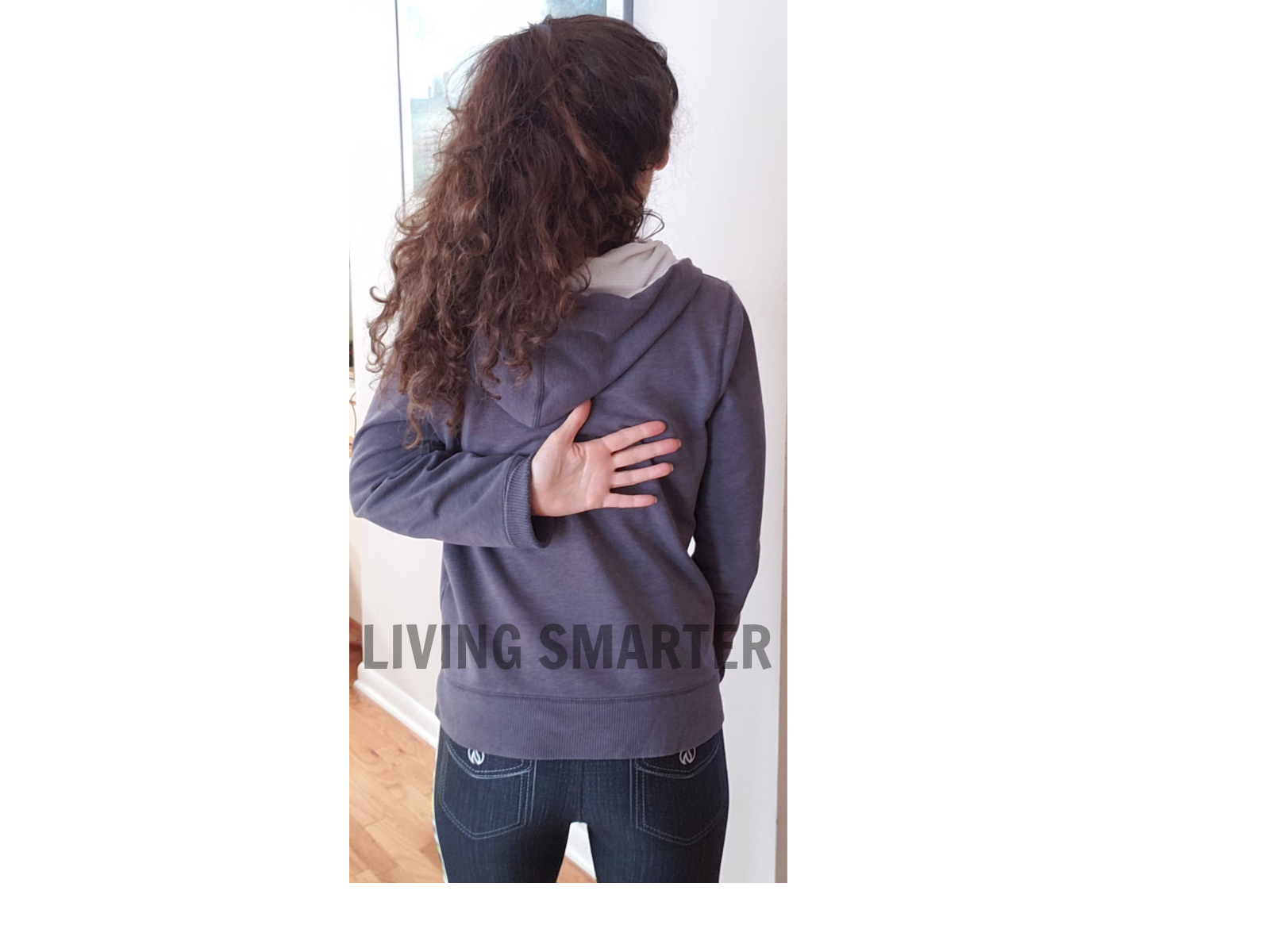Shoulder pain and fibromyalgia
Being the most mobile joint in the body, the shoulder can sure do a lot of things for us, like lifting, reaching, and supporting our good posture.
The problem is that with all of that mobility, and wear over time, we can end up having fibromyalgia shoulder pain that can radiate, burn, extend up and down the arm, and cause resulting weakness.
Have you noticed that when your fibromyalgia shoulder pain is flaring, you might have problems with reaching, writing, typing, texting, using your mouse, or lying down?
I was recently doing a live video series on the facebook page talking all about the shoulder, and how simple things like lying in the bed on our back can also flare shoulder pain when the shoulder goes to rest in a lower position.
You wouldn’t think about that one until it happens to you, and boy, can it be painful.
Maybe you reach up to get some plates from the cabinet, and feel a sharp and radiating pain in your upper (humeral) arm?
Oh yea, I get that, and why it always reminds me of the vulnerability of this area. Shoulder pain can also be age related, I know for myself, I’ve had more shoulder issues since about age 50.
Injury, repetitive motion or age related shoulder pain
With fibromyalgia shoulder pain, we have more variables than just shoulder pain by itself.
With fibromyalgia, we have the propensity to both tender areas around the lower neck, and trigger points that can occur anywhere around the head, neck, shoulder, and clavicle area.
Things can accumulate over time. A job where you engage in repetitive motion with your upper body, lifting children, extending too far out from the body, and more.
Trigger points can be created from injury or repetitive motions, and I like to say it can look like a connect the dots game. Unlike tender areas, trigger points tend to radiate pain AND they have a propensity to cause inflammation.
If someone you know ever says fibromyalgia is not inflammatory, send them here, I talk about this often.
Take the Apley Scratch test
The Apley Scratch test is simply a test anyone can do to determine the range of motion around the shoulder and upper arm (humeral)
As I am showing here below, you simply reach back, as if you’re scratching your back.
How far can you reach? Can you reach further on one arm than the other?
I have more range with my left arm, which I am using here, the right not as much.

Activities of Daily Living
There are many daily activities of living that can put pressure on the shoulders.
When doing an activity like vacuuming, be sure you are focused, and pushing into the movement, rather than allowing the movement to “pull” on your arm or shoulder.
When reaching for something, always be aware of the weight of what you are picking up. The worst thing is to have your arm already extended, and then discover something is too heavy.
As you can imagine, I cringe when I see people at the gym using Kettle Bells, because extending weight too far from the body can be dangerous, and we just want to err on the side of caution.
If you are at your computer for extended periods of time, take breaks, and even change the arm that you use with your mouse.
I prefer a cordless mouse, as the mouse built into the laptop can be really tough on the shoulders and upper arms.
Be careful of leaning on your arms or shoulder. I was recently leaning down on my kitchen island, supporting my forehead with my hand, and within seconds of resting my arm on the top of the island, I got a sharp radiating pain right up to my shoulder. It was likely the angle and pressure together.

Suggestions for helping to
reduce shoulder pain
There are many suggestions I have given over the years for shoulder pain, but let’s focus on a few important ones here.
1. Circulation therapy (in this case, hot/cold therapy) is important and can relieve the intensity of the pain. Unlike a lower extremity, it might be a little more challenging to reach this area, but we have to get creative.
You can alternate hot and cold water in the shower (not feasible for everyone) of alternate hot and cold packs on the shoulder area.
(NOTE that the often recommended time for hot/cold therapy is often 20 minutes hot, 20 minutes cold. However, with fibromyalgia, I like to say 10 minutes or even less) Try to get a total of 45 minutes to an hour in daily, and this will be sufficient for many, 1-2 times per day or when feasible.
2. Be aware of sleeping habits. It is obvious that side sleeping would not be the best, but also when you lie down on your back, the shoulder is allowed to fall back further than when you are standing upright. I find it really helpful to use a small pillow under my shoulder when I need it.
3. Keep the blood flowing by doing any level of daily movement that is right for you. Follow me on the fitness page, Fibro Fit People, where I have a video section of exercise videos in one category that are focused and tailored for fibromyalgia.
4. Use the “Shoulders Back” device shown here in the upper back pain article. I use this, and I have gotten many good comments and feedback from other who are using it.
It helps posture, shoulder support, and like my experience, people report that it just feels good. You don’t wear it all the time, just enough.
5. Be aware of posture, walk in your confidence. Don’t think it matters? It really does. Falling posture affects the shoulders, entire back, chest, abdomen, and clavicle area.
Natural Remedies/Anti-Inflammatories and a Video that is all about the shoulder
Whether it is fibromyalgia pain itself causing you shoulder pain, arthritis or bursitis, you might try utilizing natural remedies first. I like Boswelia, CBD oils or cream, and Astazanthin.
With joint pain, there can be inflammation. All of the above suggestions are meant to reduce inflammation as well. Be sure to address any bone density issues, and if you are over 50 like I am, then getting a DEXA bone scan every two years is a great idea.
reference<https://www.living-smarter-with-fibromyalgia.com/fibromyalgia-shoulder-pain.html?fbclid=IwAR08peUt3IrIc2Mg9sic-XkwQaEKb6eYvBtWf9kYVrQyksv0G4ibbE3ajX0



